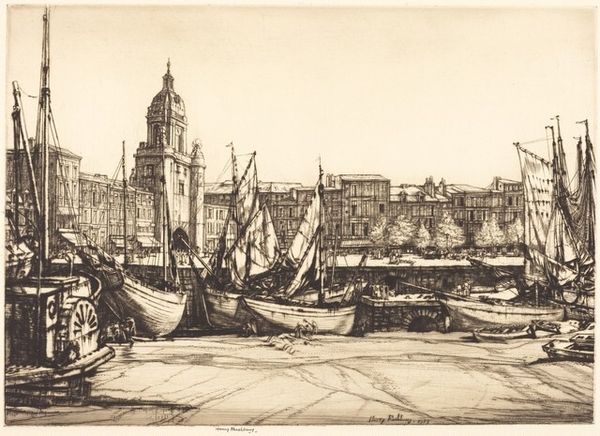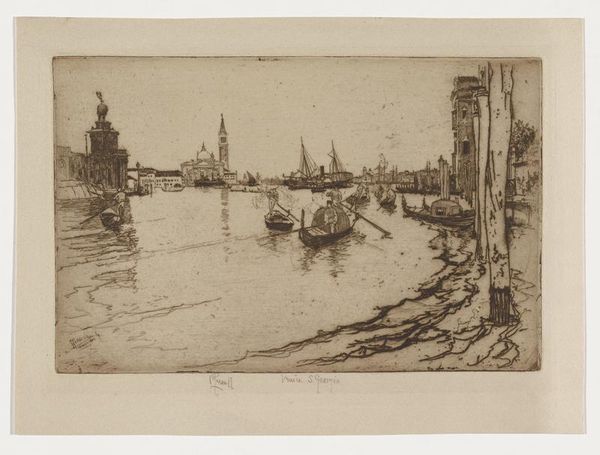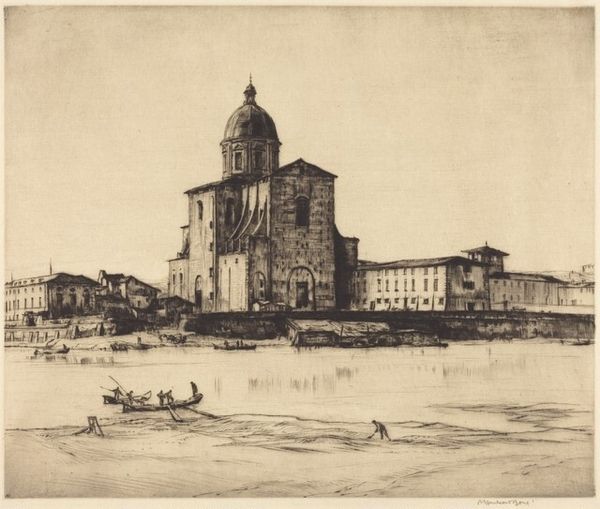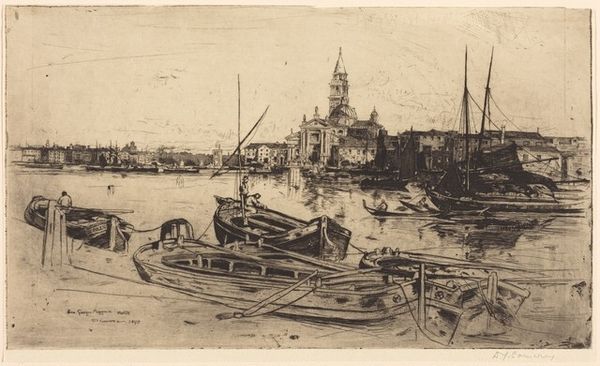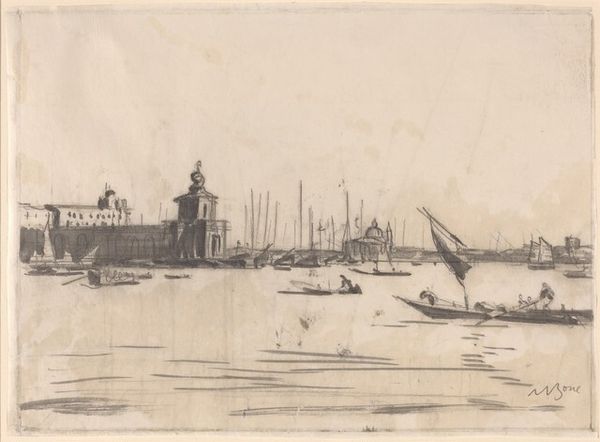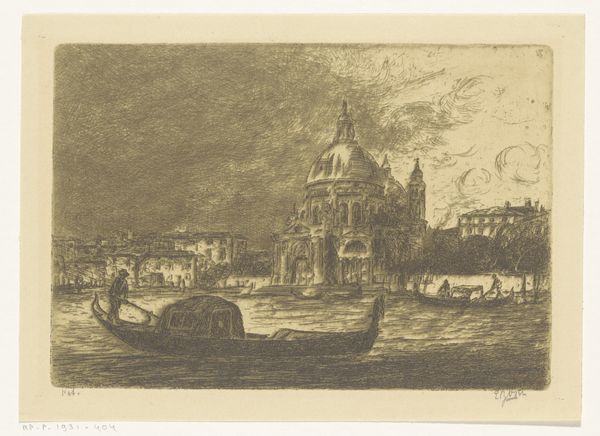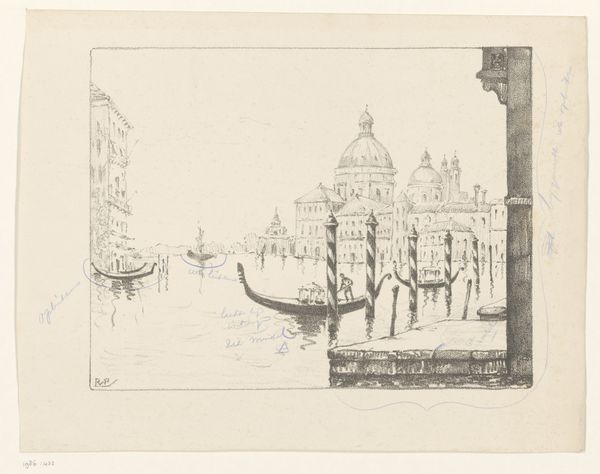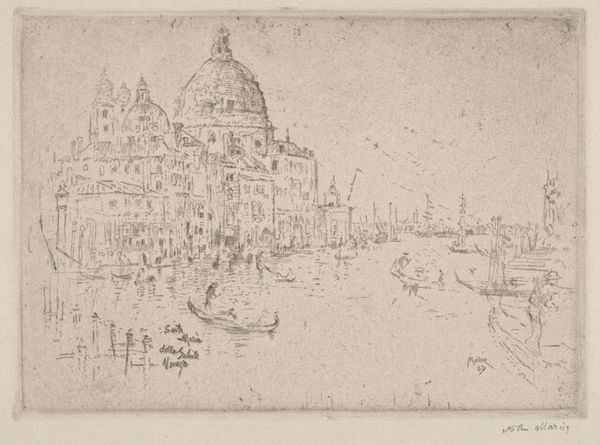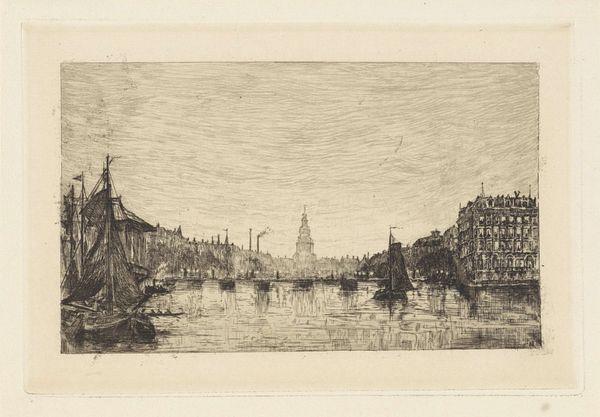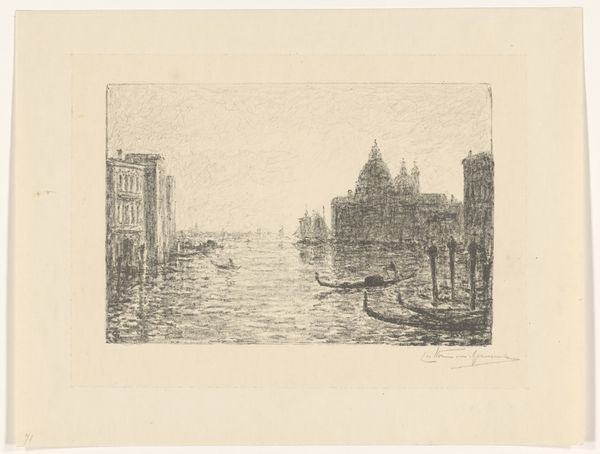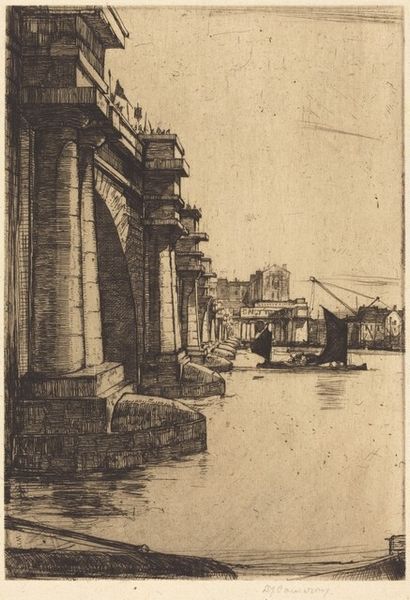
drawing, print, etching, pencil
#
portrait
#
drawing
# print
#
etching
#
pencil sketch
#
pencil
#
cityscape
#
modernism
#
realism
Copyright: National Gallery of Art: CC0 1.0
Curator: Let's take a look at Earl Stetson Crawford’s "Chiesa della Salute from San Giorgio," created in 1927. It’s an etching, a type of printmaking, on paper. Editor: The first thing that strikes me is the incredible texture! Look at the interplay of light and shadow, the way the lines create such depth. There's a sort of subdued atmosphere here. Curator: Definitely! The etching process lends itself well to that atmospheric quality. The work itself depends on the engraver’s application of acid to a metal plate, where lines are “bitten” to hold ink for printing. What interests me is that, despite the apparent precision in the architectural details, Crawford highlights the everyday labor inherent to a city like Venice. Editor: I agree. This isn’t just a picturesque cityscape; it includes workers. We see their physical exertion so, by depicting their labor against the backdrop of this famous monument, Crawford seems to be subtly commenting on the social dynamics of the city. Curator: The architecture, that cityscape is itself a construct built by similar labor! Editor: Absolutely, it acknowledges the interconnectedness of different social strata, perhaps. Also, this choice of scene—Venice, specifically—invites viewers to consider the legacy of Venetian trade, its global reach, and how this connects to present-day systems. Curator: You’re spot on. And technically, the etching process itself, is integral to this interpretation. Each impression becomes part of a broader economic system and consumer base, which also raises the question: Who gets access to beauty, and at what cost? Editor: Thinking about Crawford's life and context may inform that, too. What were the dominant ideologies, and social structures he experienced that might have shaped this perspective? What socioeconomic groups could acquire art in 1927? Curator: Right. Thinking about this print makes you realize that art is never divorced from labor, economy, or politics! Editor: Agreed! And through it we glimpse the social realities interwoven with the city's beauty and grandeur.
Comments
No comments
Be the first to comment and join the conversation on the ultimate creative platform.
